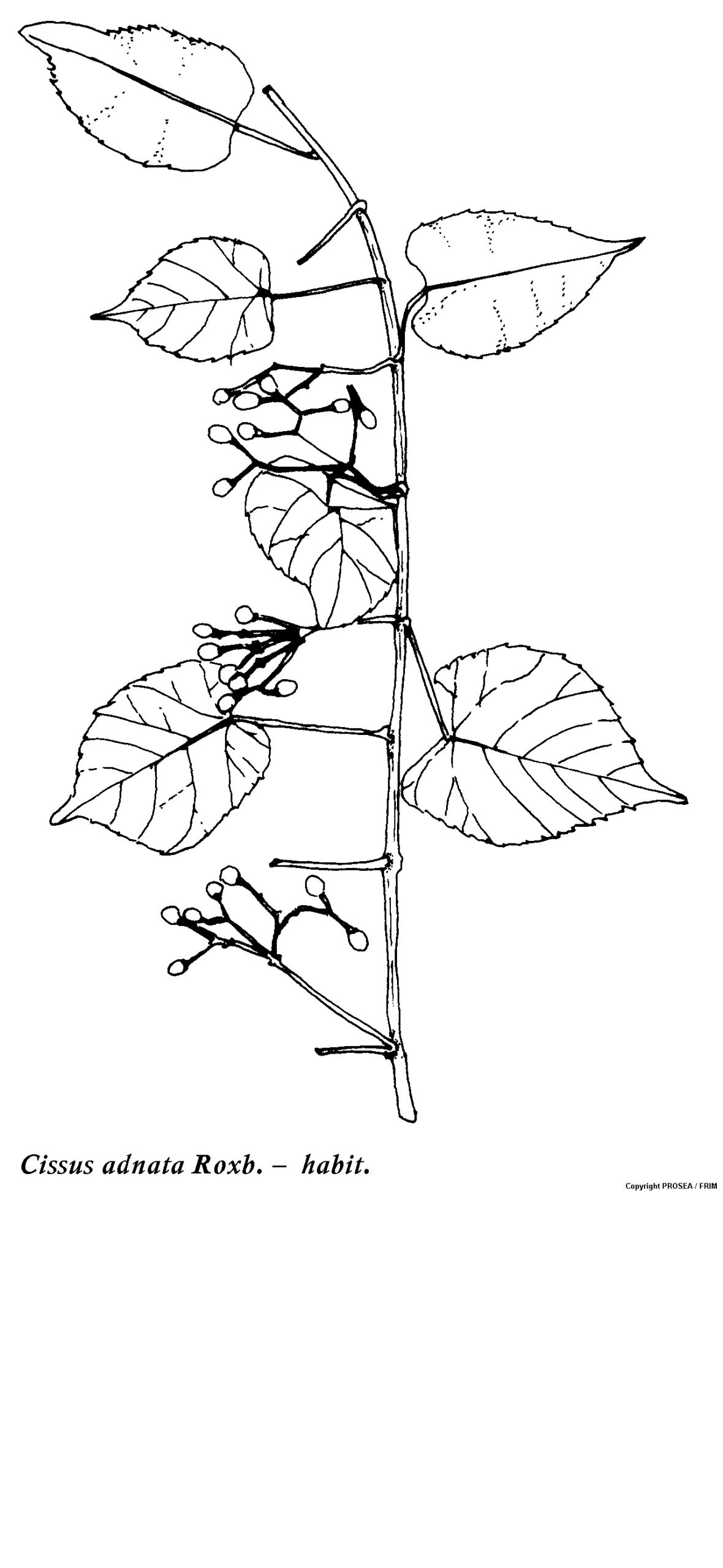Cissus adnata Roxb.
Family
Vitaceae
Synonyms
Vitis adnata Wight & Arnott.
Vernacular Names
| Malaysia | Akar gamik, sambangan, seketan. |
| Indonesia | Areuy beungbeurutan (Sundanese), bantengan, galing kebo (Javanese). |
| Philippines | Ayong-kabayo (Tagalog), bolakau (Kuyonon), linga-an (Bagobo). |
| Thailand | Hun (Eastern). |
| Vietnam | d[aa]y n[oo]i, d[aa]y cu[oos]n. |
Geographical Distributions
Cissus adnata have cosmopolitan distribution which covered from India and Sri Lanka to Indo-China, Thailand, throughout Southeast Asia into tropical Australia.
Description
C. adnata is a deciduous, slender climber that can grow up to measure 5-15 m long. The bark is often reddish in colour, flaky, pubescent when young, with multicellular hairs, uniseriate and unicellular 2-armed and usually with unbranched tendrils.
The leaves are simple, orbicular to broadly ovate in shape, with a size of measure 8-18 cm x 10-19 cm, cordate to kidney-shaped base in shape, acuminate to cuspidate apex, membranaceous and prominent veins. The secondary veins are terminated in hair-like projections which extend beyond the margin. The hairs on the lower surface are 2-armed and with measure about 3-8 cm long petiole. The hairless stipules are rounded-triangular in shape and measure about 3.5 mm long
The inflorescence is umbellate, loose, measuring 2.5-7 cm long, with 3-5 primary branches and pubescent. The petal is measure about 1-1.5 mm long, often papillose and pale green to white in colour.
The berry is pyriform, measure about 4.5-7 mm long, dark brown to black in colour and with 1-seeded.
The seed is ovoid in shape, measure 4-6 mm long. The lower end is beaked. The endosperm in transverse section is divided twice by the thin endotesta. Cotyledons are similar.
Ecology / Cultivation
C. adnata occurs in semi-deciduous thickets close to beaches, monsoon forest and open forest, usually on well-drained soils. Soils are variable but usually sandy to sandy loam, sometimes lateritic, sometimes calcareous.
Line Drawing / Photograph

References
- Plant Resources of South-East Asia No. 12 (2): Medicinal and poisonous plants.


